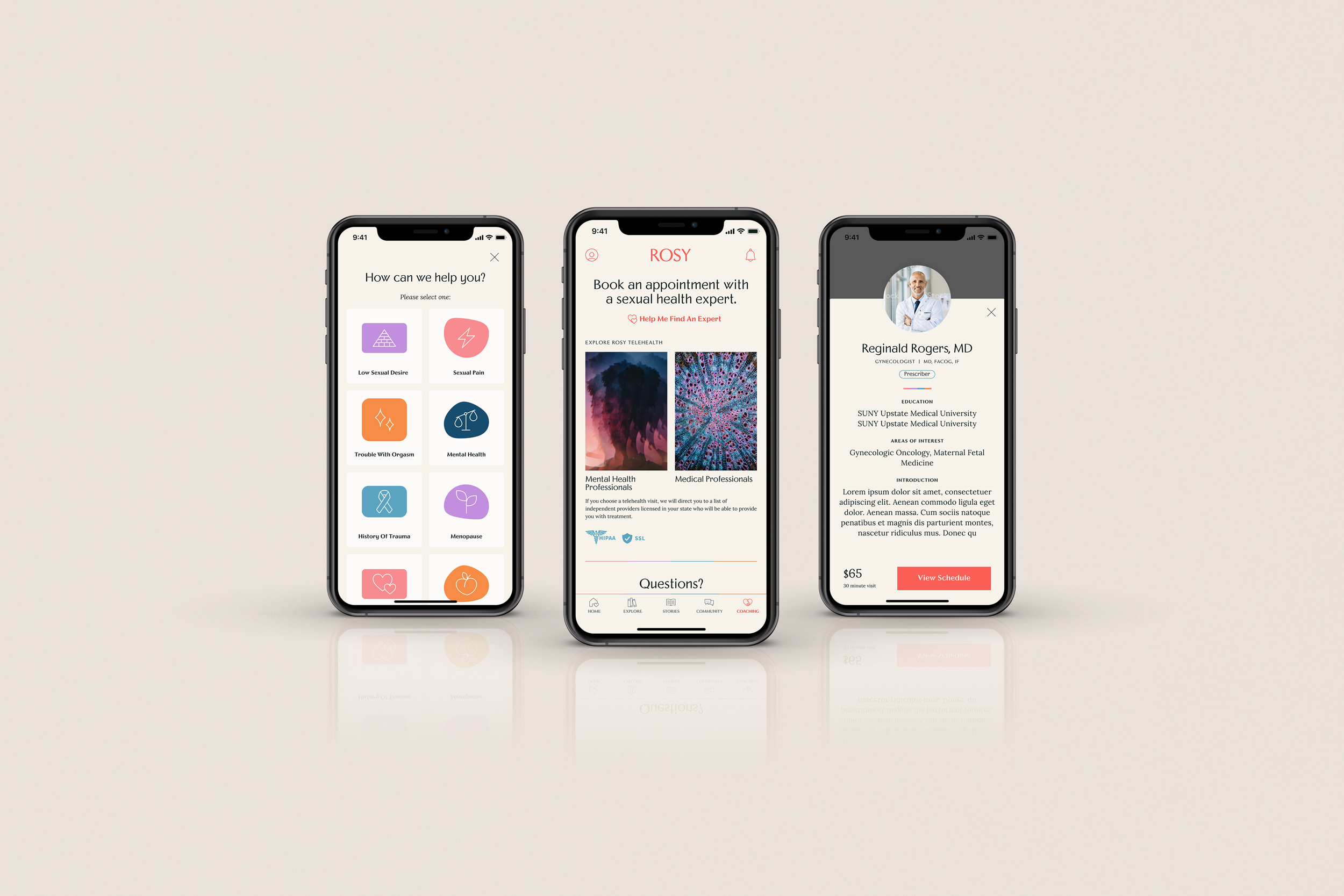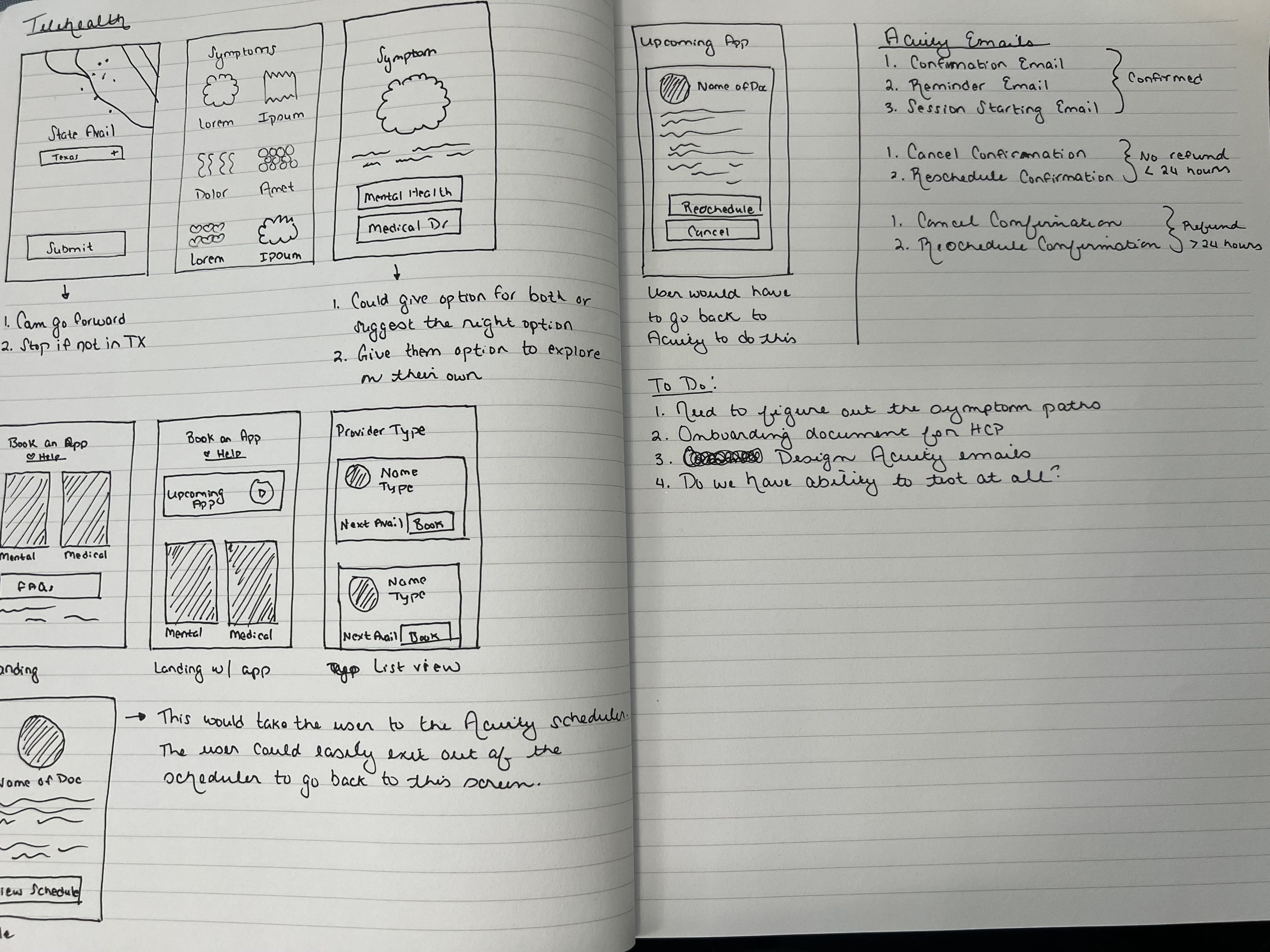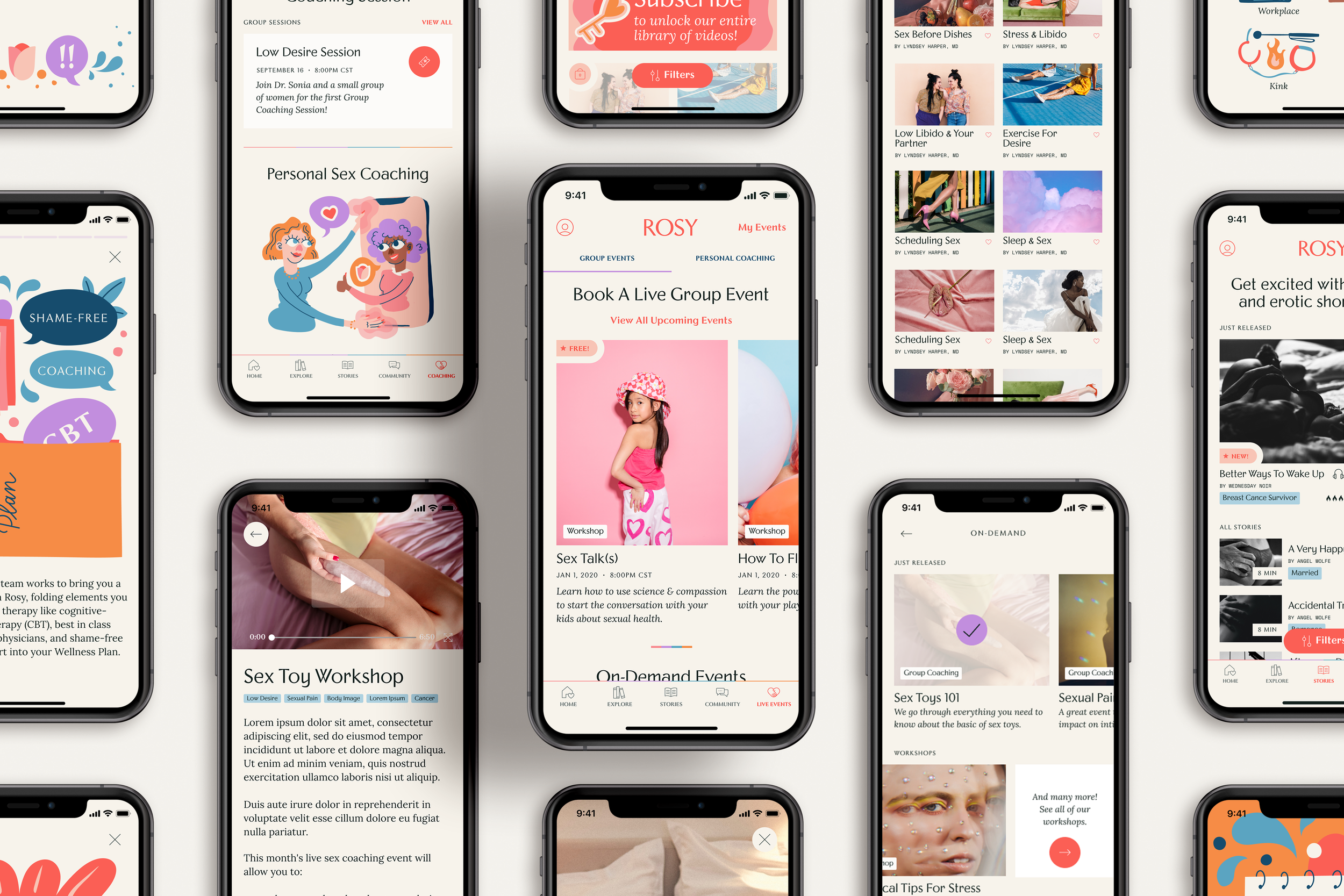Role: As the founding and sole designer on the team, my duties included research and development, journey mapping, product design, feature strategy, and user testing. The intricacies of working with a start-up required me to work within tight deadlines, oftentimes forgoing traditional strategies.
Problem: The sparsity of sexual health training in medical school has created a gap in treatment for women seeking help. Additionally, finding a medical professional who specializes in sexual health can be a tedious and overwhelming process for someone who is already feeling defeated. Our goal was to bridge this gap.

Scope & Audience: Having conducted numerous surveys, interviews, and user tests, I had a thorough understanding of our user's needs and preferences. Given the legal intricacies surrounding medical licensing, we chose to initiate a targeted test phase of the feature with women residing exclusively in Texas before extending our reach to other regions.
Constraints & Research: In the face of tight fundraising deadlines, our plan was to create a comprehensive telemedicine solution, complete with scheduling video functionality, and one-time payment processing all while ensuring strict adherence to HIPAA guidelines. Conversations with the founder confirmed our goal of collecting user insights post-launch, so we could make quick iterations and pivots on the live feature.
After much research, a custom build was not feasible within our timeframe, and white-label telemedicine platforms' customization limitations and high costs deterred us from moving forward. As a result, we needed to get creative and found separate companies that offered each of our requirements, while being HIPAA compliant, but could work together while we were testing the feature. We were confident in the efficacy of these products for a quick release.

Outcome: Regrettably, the release of the feature did not yield the expected success. While users did express interest, the cost of the feature proved to be a significant barrier to adoption, especially considering the lack of availability outside of Texas. As such, we were compelled to pivot our approach.
The Pivot: In light of the challenges faced with the original medical feature, we reevaluated our strategy and shifted towards a more innovative approach. Our goal of providing women with easy access to expert sexual health services remained, but we pivoted away from traditional medical treatments and towards the realm of sex coaching. By adopting this novel perspective, we were able to sidestep the legal barriers associated with traditional medicine, and as a result, expand our feature beyond Texas to reach a nationwide audience. The possibilities were endless, and we were able to create a multi-faceted feature that users could interact with at different touchpoints, providing a personalized experience like no other.

The Changes: The implementation of the updated feature was relatively smooth. One of my first priorities was to develop a customized scheduling tool. Although using an existing service cut down on development time, we discovered that it created a disjointed user experience and resulted in a significant loss of users during the booking process. Secondly, we expanded our coaching services to include two subscription tiers, namely group and individual coaching. This provided users with additional options to choose from. Finally, we created an on-demand library that enables users to access previous coaching sessions. By providing users with these three different ways to access coaching, we were able to address their varying needs for comfort, level of support, and affordability.
2023 Vanessa de Abreu